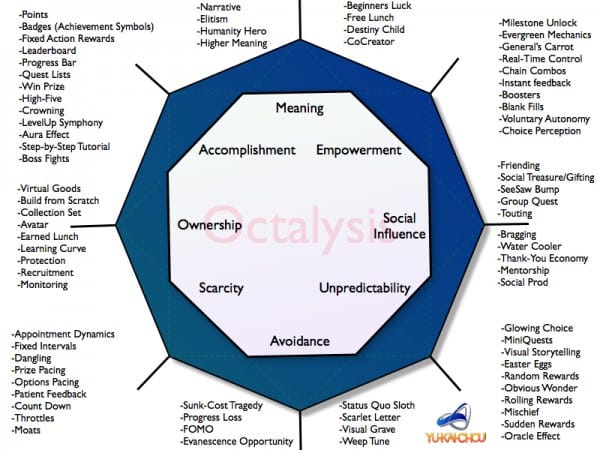Game on! Consumer empowerment and gamification in international recruitment marketing
Over the last decade, the landscape of brand marketing has changed, in a way that is similar to the way a housing market moves from being a “seller’s market” to a “buyer’s market.” No savvy marketer today would argue that today’s consumer marketplace belongs to the sellers, nor that it will any time soon. In the 21st century, the consumer is king. This ICEF Monitor article will examine what this shifting power dynamic means in the context of student recruitment and how it feeds the growth of consumer-centric marketing techniques such as content marketing and “gamification” (brands’ use of game-playing conventions and interfaces to stimulate consumer engagement). For an introduction to the topic, and some early examples of how game strategy has been applied in student recruitment marketing, please see our earlier post, “Play to win with game strategy in recruitment marketing.” In addition, we are fortunate to be able to share the insights of Yu-kai Chou, a gamification pioneer who has been a keynote speaker at the likes of such institutions and entities as Stanford University and Google. Mr Chou has created a gamification framework called Octalysis, and he explained its essence and how it works at the recent EAIE Conference in Prague.
What consumers now expect from brands
More than ever, consumers dictate the terms of how and whether they will be engaged and what form this will take. It could be as little as just reading or viewing content produced by a brand or advertiser and it could be as much as buying the brand and sharing their positive experience with other prospective buyers. Consumers' greater discretion and power is because of many reasons including:
- The explosion of products and services from everywhere in the world by a much more diverse set of sellers, thanks to the Internet and social media;
- The myriad ways beyond traditional advertising consumers now find out about, and choose from, brands, again thanks largely to the Internet and social media.
As a result, the competition for consumers’ attention has never been fiercer, and consumers have never expected more from brands than they do now. They demand that brands be entertaining, informative, pleasing, rewarding, and exciting if they are to consider an actual purchase. This is why two of the big buzzwords in marketing these days are content marketing and gamification: both cater to this more comprehensive set of consumer demands. Content marketing provides information and gamification provides entertainment.
Gamification predicted to grow but to yield returns for a minority of brands
There is no doubt that gamification is popular and that it is only going to get more so. PRWeb reports that according to market research firm Markets and Markets, the global gamification market will grow from US$421.3 million in 2013 to US$5.502 billion in 2018, a compound growth rate of 67.1%, with North America expected to be the biggest market followed by Europe and Asia. And Gartner Research predicts that over 70% of the top 2000 companies will use gamification by the end of this year. And yet, Gartner also predicts that 80% of gaming apps will fail due to poor design. What is meant by poor design? Poor design puts too little emphasis on the players and goals of the game because it focuses too much on rewards and dynamics intended to build hype and excitement. In other words, poor design spends too little time considering that the players are human – with certain emotional drivers that cause them to act in certain ways – and that the game has to reinforce the brand’s personality if it is to be at all worthwhile. In some ways, this situation echoes the early days of web design, when website creators and online advertisers got so caught up in the technology and visual flash appeal that they neglected content.
The Octalysis framework
Ironically, for gamification to be successful, the first step is thinking … well, outside of the game. Gamification pioneer Yu-kai Chou told a packed room at the EAIE Conference that “good gamification does not start with game elements.” According to Mr Chou, successful games use Human-Focused Design, which:
“… remembers that people in a system have feelings, insecurities, and reasons why they want or do not want to do certain things, and therefore optimises for their feelings, motivations, and engagement.”
Mr Chou explains that a successful game depends on understanding what matters to students, then proceeding from there to figure out what game elements would then appeal to them.
He has designed a gamification framework called Octalysis (based on its octagon shape) now used by gamification experts around the world. Octalysis identifies eight possible “drives” (motivations for engagement) that marketers should consider when developing their games. One or more may be relevant to a marketer’s target; the trick is to include only the most pertinent in design planning and execution.

- Epic Meaning & Calling – Being part of something bigger than ourselves.
- Development & Accomplishment – The feeling of making progress toward a larger goal and overcoming challenges along the way.
- Empowerment of Creativity & Feedback – Using creativity to solve problems or expand the game.
- Ownership & Possession – When we feel a sense of ownership we want to customise our experience, improve it, protect it, and acquire more of it.
- Social Influence & Relatedness – This could range from tapping into participants’ competitive nature to working together with people who are like them to accomplish a big task.
- Scarcity & Impatience – Humans always want what we can’t have, and the harder it is to get something, the more we want it. And some of us are impatient to get what we want, so it may be important for the game to allow us to move farther ahead via monetisation techniques, for example.
- Unpredictability & Curiosity – We can become easily addicted to something when we don’t know what will happen next – it increases the excitement and surprise factor of the game.
- Loss & Avoidance – Who likes to lose, or encounter setbacks? Not many people. This drive pushes people to act rather than miss an opportunity or suffer the consequences of having to fix or repair their position in the game.
Mr Chou notes that the most popular game on Facebook currently, Candy Crush Saga, uses all eight core drives of Octalysis.

Octalysis and education marketing
As we noted in our previous article about gamification, there are countless behaviours educational institutions might want to encourage and reward among current and prospective students as well as alumni via gamification. For example, they might want to see students:
- Investigate what the institution has to offer (e.g., a campus tour);
- Progress in the application process;
- Enroll;
- Provide positive word of mouth about the study experience;
- Remain at the school for longer amounts of time (e.g., to take another course, to take a master’s from the same university as the undergrad was achieved, etc.) or otherwise staying affiliated with it (e.g., alumni ambassadors).
Thinking of Mr Chou’s Octalysis framework, the question now becomes: how best to encourage and reward such behaviours? How can gamification help to make such behaviours fun and exciting? Mr Chou gave examples of how various Octalysis drives might stimulate answers to these questions. For example:
- The Scarcity drive might apply to top students interested in competing for a small number of spaces at elite institutions.
- The Accomplishment drive might relate to milestones like graduating with honors, or building up a resume with in-demand industry experience.
- The Social drive might be important for students who care about friends, family, or famous people who went to the educational institution in question, or learning a new language that more people are beginning to study (e.g., Mandarin, Arabic, Spanish).
- The Curiosity drive might apply to student questions and ideas like “What is it like to study in Dubai?” or “I don’t know how/when I will use Japanese but I’m interested in the culture so let’s see where it takes me.”
- The Epic Quest could sit well with students who have an “I want to change the world” motivation, and it could be used to drive interest in health, STEM, or environmental subjects.
For those in the process of planning and/or executing a game designed for students, you can plot your game mechanics on Mr Chou’s Octalysis framework using this tool, currently in Beta format: Octalysis tool.
Think beyond educational marketing
Key to the success of most marketing is to consider a target market as more than a target market – to think of it as a group of humans with feelings, dreams, and needs. This essential point applies very much to educational marketing because education is an emotional pursuit and accomplishment. Students are not buying degrees or choosing locations to study in so much as they are investing in their dreams and hoping for the experience of a lifetime. Therefore, educational marketers can tap a much richer vein of inspiration and material than they might at first imagine. A non-educational brand provides a relevant example of what we mean here. Volkswagen is a car brand that thinks outside of its category and bases its personality on the concerns and dreams of its target market. Its famous “Fun Theory” website is based on the idea that humans are more motivated to participate in positive, healthy behaviours when they are fun. Fun Theory videos sometimes include cars (e.g., their seatbelt or speed limit videos) but they also cover such areas as environmentalism and exercise. Via its Fun Theory, Volkswagen thus moves itself from a possible perception that it is one car manufacturer among many to a position as an innovative, confident, inclusive brand that thinks about far more than cars. Presto: competitive advantage. From gamification to content marketing and everything in between, the common requirement is to think of people and what they want or need first, and selling the brand second. Designing marketing strategies around this understanding is the most promising way to develop a compelling, sustainable brand that students will find worthy of their time and attention.
Most Recent
-
ICEF Podcast: Together for transparency – Building global standards for ethical international student recruitment Read More
-
New analysis sounds a note of caution for UK immigration reforms Read More
-
The number of students in higher education abroad has more than tripled since the turn of the century Read More
















